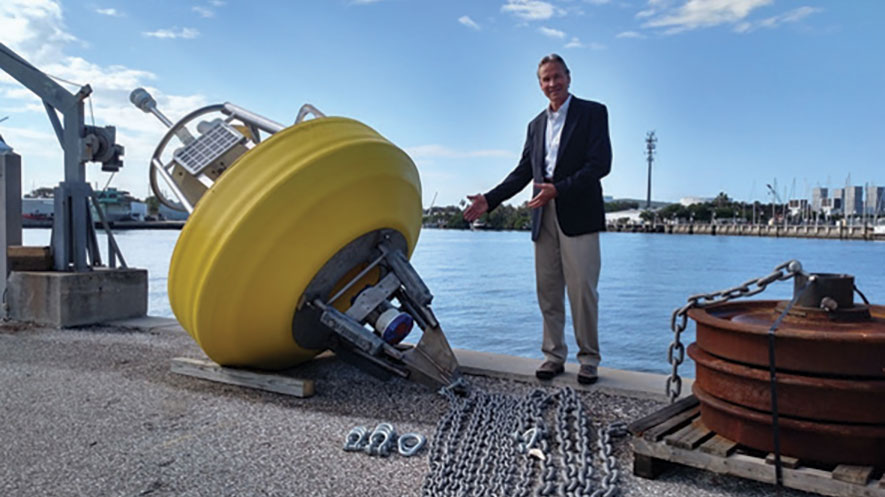Costa Rica is currently the world’s largest exporter of pineapples, and the third-largest exporter of bananas; sugar, coffee and beef are also major export products.
Costa Rica’s exports totaled US$11.75 billion in 2014, with the US its largest export market, the destination of nearly 40% of all Costa Rican exports. In the first six months of 2015, Costa Rica shipped over a billion tons of pineapples, 473,000 tons of which were destined for the USA. Costa Rica’s exports account for 40% of the Central American nation’s GDP.
The existing port of Limon was constructed over 30-years ago and with the increase of import/export activities of Costa Rica and Latin America in general, a new, up to date container port must be constructed to handle the steady stream of vessel traffic in and out of the country. In parallel to all the pre and present construction involved, dredging, seawall manufacturing and permanent pier support, all environmental conditions must be monitored, both terrestrial and marine related. To enable Costa Rica’s future economic growth needs APM Terminals Moin has announced a number of port project updates, including a safe, world-class, high- productivity and environmentally-sustainable container terminal designed to serve larger vessels, in particular the temperature controlled containers through which fresh fruit is now being transported to North America and Europe.
Coastal erosion and offshore MetOcean parameters are required to be measured during the construction phase of the project and are to begin in the Spring of 2016 for a duration of 3-years. All parties involved in this project must adhere to strict environmental standards.
SOLUTION
A met-station has been installed on the beach close to the construction site and a MetOcean surface buoy system has been designed, shipped and deployed 1km offshore from the new port facilities. Full meteorology at the sea surface; wind speed and direction, pressure, air temperature and relative humidity along with water column current velocity and direction (Teledyne RD Instruments, TRDI) and turbidity (Campbell Scientific OBS) are to sample over an hourly basis with data transmitted to the shore via the cell phone network of the region. A TRDI Sentinel V WH-ADCP is also employed close to the buoy system to collect wave spectra; height, frequency and direction (self-contained data, non real-time). Buoy data will be received at the client’s main office in San Jose and disseminated to all parties for viewing. Both offshore systems are to be serviced on a 4-month schedule.
RESULTS
In March of 2016 the offshore plan for environmental monitoring the new port construction in Moin was established. Once all logistics to transport, build, test and make ready for sea were completed, the system was loaded aboard the project’s work vessel MAGGIE-M and taken o shore for deployment. Depth is shallow, 16-meters and only 1km from the pier. Deployment took less than an hour pier-to-pier and was a complete success. Weather was perfect with no wind and calm seas. Wet-data transmission was confirmed immediately due to the CSCC App on the project leads’ smart phone. All parameters were coming in as planned. Further monitoring took place for the next few days to make sure all was well before project personnel departed the region. Data continues to report daily. Sentinel V data will be downloaded manually upon recovery in July.
SUMMARY
After nearly a year of planning the initial phase of the monitoring project, everything was a complete success. All sensors, including the Express WH-ADCP performed perfectly and continue to do so. The Buoy system is an RDSEA design taking decades of experience in the ocean climate monitoring community both in blue-water and coastal monitoring. RDSEA also has over 30-years of working with RD Instruments and ADCPs (“Ocean Climate, O the Shelf”’ Cole et al, Marine Technology Society (MTS) Journal, Jan/Feb,2013, Vol 47, No 1). Partnering with Campbell Scientific, Logan, UT, Campbell Scientific Central Carib, San Jose, Costa Rica and Teledyne RD Instruments made this project complete and entirely successful.





